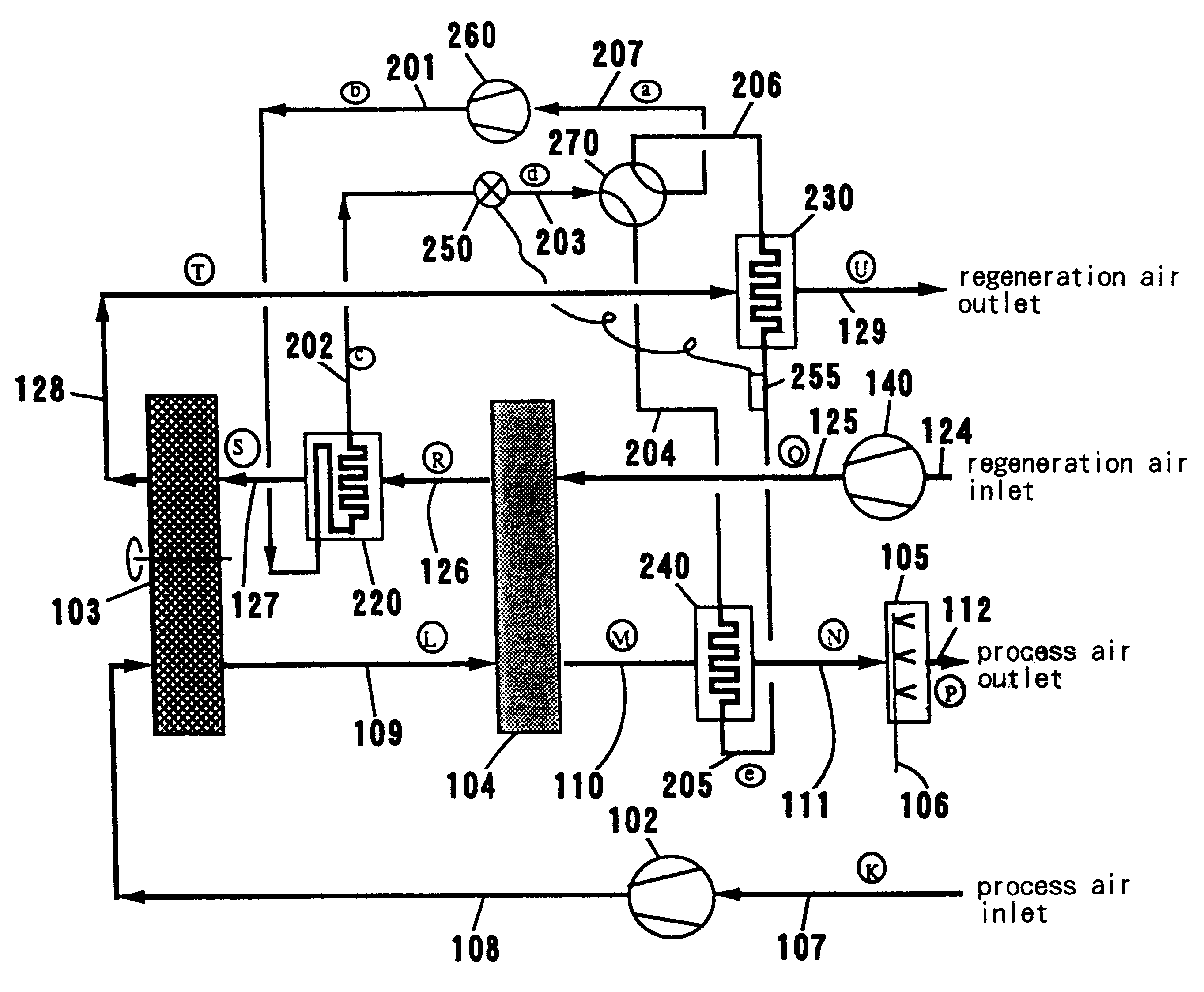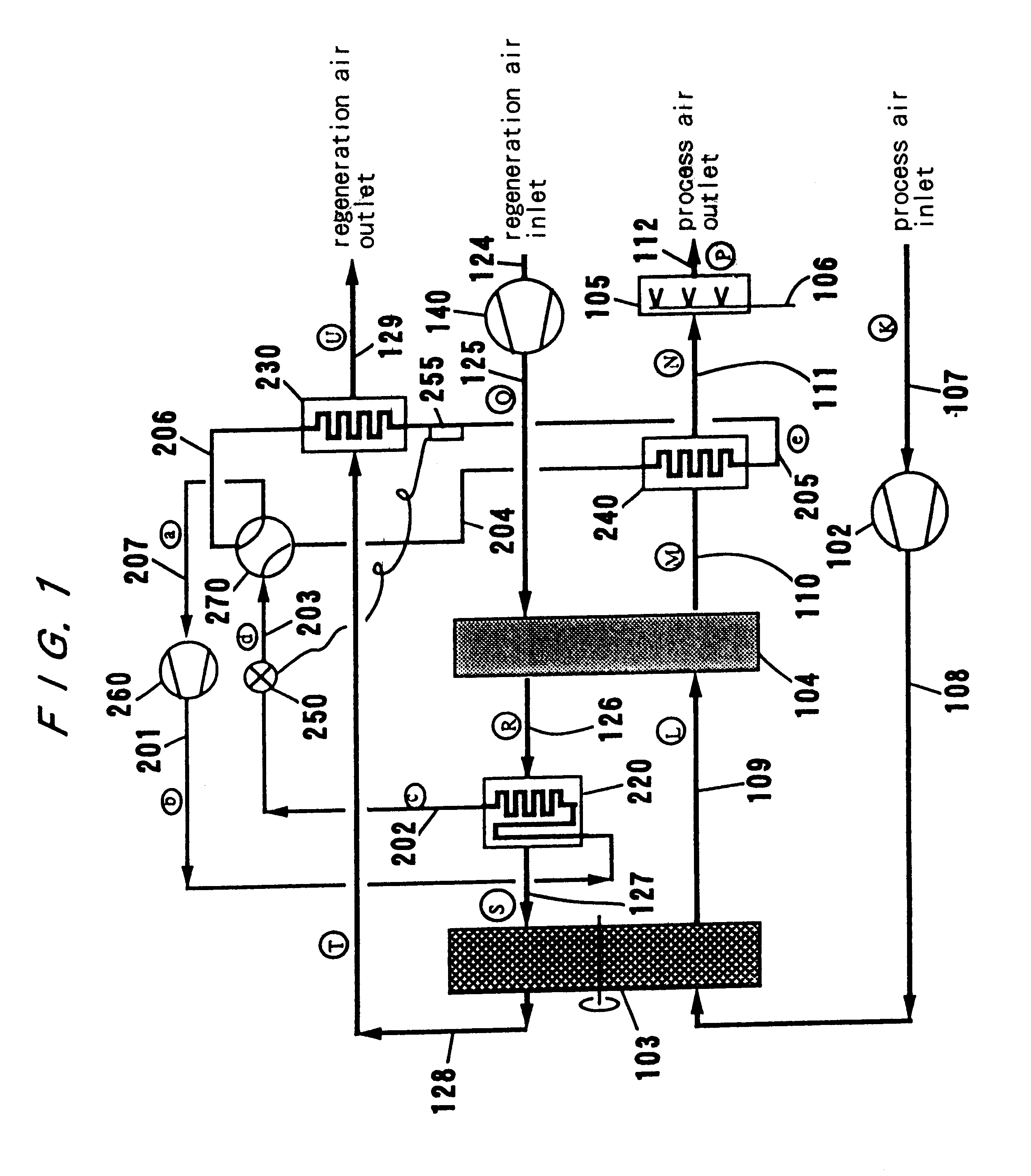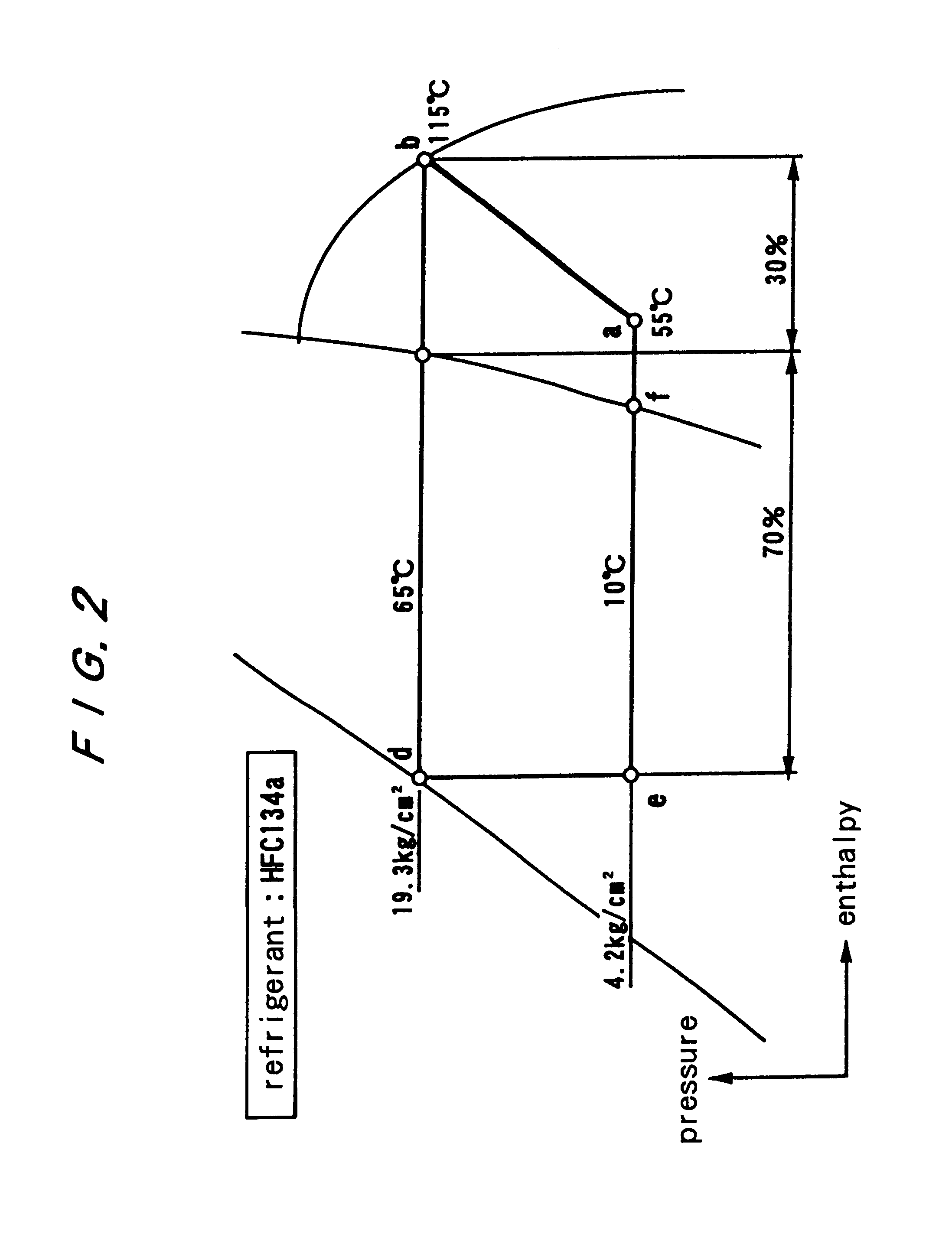Air Conditioning system and method for operating the same
a technology of air conditioning system and air conditioning system, which is applied in the field of air conditioning system, can solve the problems of abnormal condensation pressure of refrigerant, inability to exceed the cooling effect, and no benefit resulting from complex system, etc., and achieve the effect of superior dehumidification capability and performance characteristics
- Summary
- Abstract
- Description
- Claims
- Application Information
AI Technical Summary
Benefits of technology
Problems solved by technology
Method used
Image
Examples
first embodiment
FIG. 1 shows a diagram of the basic structure of the air conditioning system of the present invention. A vapor compression type heat pump 200 comprises: a compressor 260; a first low-temperature heat source heat exchanger (evaporator) 240; a second low-temperature heat source heat exchanger (evaporator) 230; a high-temperature heat source heat exchanger (condenser) 220; and an expansion valve 250 so as to construct a vapor compression type refrigeration circuit. A four-way valve 270 is provided in a passage from an expansion valve 250 in this circuit to the compressor 260. The four-way valve 270 selectively switches the flow of the refrigerant heading towards the inlet of the compressor 260 between the two paths as follows. One path takes the refrigerant exiting the expansion valve 250 to four-way valve 270, a first low-temperature heat source heat exchanger (evaporator) 240, a second low-temperature heat source heat exchanger (evaporator) 230, and to a passage 207 to the inlet of t...
second embodiment
FIG. 6 shows this invention. This embodiment is similar to the first system, in which the vapor compression type refrigeration circuit of a heat pump 200 comprises: a compressor 260; a first low-temperature heat source heat exchanger (evaporator) 240; a second low-temperature heat source heat exchanger (evaporator) 230; a high-temperature heat source heat exchanger (condenser) 220; an expansion valve 250, and a four-way valve 270 is provided between a passage from the expansion valve 250 to the compressor 260 of the circuit, so that the four-way valve 270 can selectively switch the direction of the refrigerant flowing towards the inlet of the compressor 260 in such a way that the refrigerant exiting the expansion valve 250 passes from the four-way valve 270, to first low-temperature heat source heat exchanger (evaporator) 240, second low temperature heat source heat exchanger (evaporator) 230, and to a passage 207 to the inlet to the compressor via the other path of the four-way val...
PUM
 Login to View More
Login to View More Abstract
Description
Claims
Application Information
 Login to View More
Login to View More - R&D
- Intellectual Property
- Life Sciences
- Materials
- Tech Scout
- Unparalleled Data Quality
- Higher Quality Content
- 60% Fewer Hallucinations
Browse by: Latest US Patents, China's latest patents, Technical Efficacy Thesaurus, Application Domain, Technology Topic, Popular Technical Reports.
© 2025 PatSnap. All rights reserved.Legal|Privacy policy|Modern Slavery Act Transparency Statement|Sitemap|About US| Contact US: help@patsnap.com



